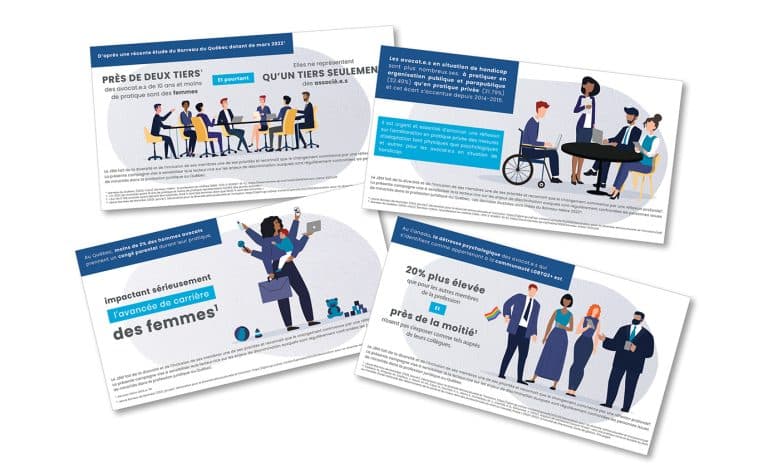
Claire Mazzini
Avocate
The International Labour Organization, in collaboration with Walk Free and the International Organization for Migration, released a report in September 2022 on Global Estimates of Modern Slavery: Forced Labour and Forced Marriage; among other observations, “forced labor has grown in recent years” and “no region of the world is spared from forced labor”1. What is being done from a legal standpoint?
THE UK MODEL
Commercial organizations that supply goods or services in the UK and have a global turnover of at least $36 million pounds are subject to the Modern Slavery Act 20152, a piece of legislation seen as a landmark in global efforts to address modern slavery and transparency in supply chains since its coming into force in 2015. Annual statements published by reporting entities must be on their website, referenced by a link in a prominent place of the website’s homepage, and approved by their Board of Directors. The Act suggests six key areas for content but mandates to either declare steps taken or that none were. The Act also revisits offenses related to forced labor, human trafficking and slavery, and created the Anti-Slavery Commissioner3.
Discussions are ongoing in the UK to strengthen the Act (an Amendment Bill was introduced to the House of Lords in June 2021) following an Independent Review by the Home Office in 2018 and a public consultation in 20194.
AUSTRALIA IN 2018
Through its Modern Slavery Act 2018, the Australian government sought to take a global leadership role in the combat against modern slavery. Any entity carrying on business in Australia with a consolidated revenue of at least $100 million Australian dollars falls within the scope of the legislation5. The Act requires entities to report annually on their efforts to tackle modern slavery risks in their supply chains through statements that6 :
- have seven mandatory criteria for their content
- need the approval of the Board of Directors
- are published on the Australian Government’s central Online Register for Modern Slavery Statements
The government is currently consulting “with business, civil society, government, and other interested stakeholders to seek views on the operation of the Act and compliance with the Act during its first 3 years”7.
CANADIAN VERSION UNDER CONSIDERATION
The Fighting Against Forced Labour and Child Labour in Supply Chains Act (or Bill S-211) was first introduced at the Senate in November 2011 and is under consideration in committee at the House of Commons. Per its summary, the Act would impose “an obligation on certain government institutions and private-sector entities to report on the measures taken to prevent and reduce the risk that forced labor or child labor is used by them or in their supply chains.”8 Private-sector entities impacted by this new obligation would9:
- be those (a) producing, selling or distributing goods in Canada or elsewhere; (b) importing into Canada goods produced outside Canada; or (c) controlling an entity engaged in any activity described in paragraph (a) or (b)
- have to file a report with the Minister of Public Safety and Emergency Preparedness on or before May 31 of each year
- ensure the report covers the seven mandatory criteria for their content and is approved by the Board of Directors
- have to make the report available to the public, including by having it in a prominent place on their website
The Minister would maintain a central electronic registry of the reports and could have a designated person inspect a private-sector entity’s compliance with its reporting obligations10.
- ILO, “Global Estimates of Modern Slavery: Forced Labour and Forced Marriage; Executive summary”, see online https://www.ilo.org/wcmsp5/groups/public/—ed_norm/—ipec/documents/publication/wcms_854795.pdf (consulted on November 5, 2022)
- Section 54 of the Modern Slavery Act 2015 (c. 30)
- Home Office, “ Modern Slavery: how the UK is leading the fight”, see online https://assets.publishing.service.gov.uk/government/uploads/system/uploads/attachment_data/file/328096/Modern_slavery_booklet_v12_WEB__2_.pdf (consulted on November 6, 2022)
- Ropes & Gray, “Proposed Amendments to the UK Modern Slavery Act Introduced in Parliament” see online https://www.ropesgray.com/en/newsroom/alerts/2021/June/Proposed-Amendments-to-the-UK-Modern-Slavery-Act-Introduced-in-Parliament (consulted on November 6, 2022)
- Section 5 of the Modern Slavery Act 2018,
No. 153, 2018 - Parts 2 and 3 of the Modern Slavery Act 2018,
No. 153, 2018 - Australian Government, “Review of Australia’s
Modern Slavery Act 2018”, see online
https://consultations.ag.gov.au/crime/modern-slavery-
act-review/ (consulted on November 5, 2022) - Parliament of Canada, “Bill S-211 (Third Reading)”,
see online https://www.parl.ca/DocumentViewer/en/
44-1/bill/S-211/third-reading (consulted on
November 5, 2022) - Sections 9, 11 and 13 of Bill S-211
- Section 15 and 22 of Bill S-211













